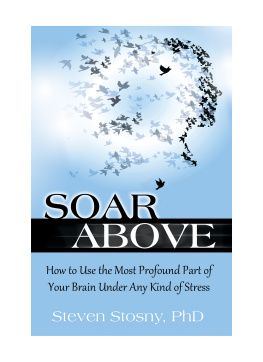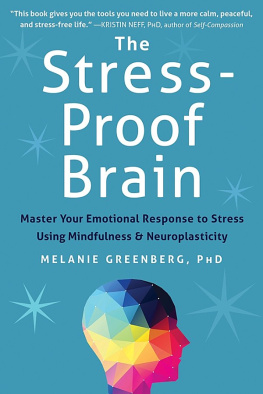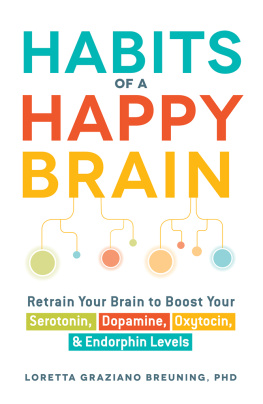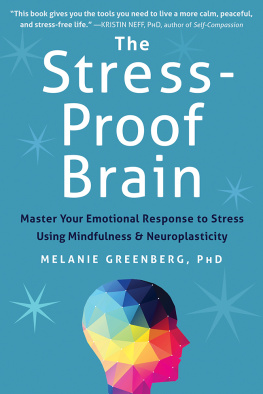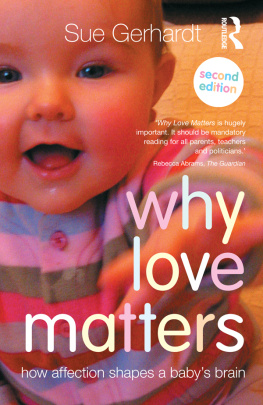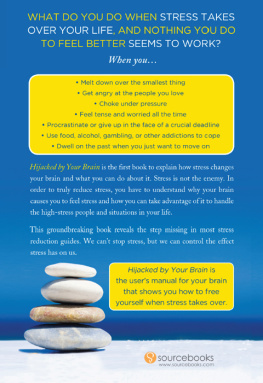Soar Above
How to Use the Most Profound Part of
Your Brain Under Any Kind of Stress
STEVEN STOSNY, PHD
Health Communications, Inc.
Deerfield Beach, Florida
www.hcibooks.com
Cataloging in Publication Information is available
from the Library of Congress.
2016 Steven Stosny
ISBN-13: 978-07573-1908-2 (Paperback)
ISBN-10: 07573-1908-4 (Paperback)
ISBN-13: 978-07573-1909-9 (ePub)
ISBN-10: 07573-1909-2 (ePub)
All rights reserved. Printed in the United States of America. No part of this publication may be reproduced, stored in a retrieval system, or transmitted in any form or by any means, electronic, mechanical, photocopying, recording, or otherwise, without the written permission of the publisher.
HCI, its logos, and marks are trademarks of Health Communications, Inc.
Publisher: Health Communications, Inc.
3201 S.W. 15th Street
Deerfield Beach, FL 334428190
Cover design by Larissa Hise Henoch
Interior design and formatting by Lawna Patterson Oldfield
ePub created by Dawn Von Strolley Grove
Contents
This book began as a way of answering three questions that have nagged at me throughout my thirty-plus years of clinical practice:
- Why do so many smart and creative people make the same mistakes over and over, in life, work, and love?
- At what point does the unavoidable emotional pain of life become entirely avoidable suffering?
- How do we escape suffering while remaining vibrant and passionate about life?
Neurological discoveries in recent years have helped answer the first two questions, as well see in the body of the book. But the third question goes beyond science to the very nature of what it means to be human.
Were Animals, After All, But Much More
The brains of all animals readily form conditioned responses to better negotiate the world around them. A rabbit nibbling on grass automatically runs when shadows move on the ground, even if it never witnessed a hawk swoop down on a littermate. The shadows are associated with an impulse to run, not necessarily with danger, when the moving shadows in its life experience were from branches of trees swaying in the breeze. Most of us will turn on an electrical deviceTV, radio, smartphonewhen coming home to an empty house or apartment, but not necessarily because were lonely. Our brains have associated quiet in the home with an impulse to seek passive stimulation, lest we fall into stupor. Were less likely to reach for the electrical device when we come home engrossed in thought. The brain tends to associate interest with depth of learning or experience, rather than distraction, and with proactive, not passive, stimulation.
The human brain forms conditioned responses not merely to environmental cues, such as moving shadows, brewing storms, and quiet houses. Our brains build conditioned responses to physiological and emotional states, our own as well as those of others. A slight drop in blood sugar causes many people to fantasize about candy or ice cream. Many folks grow sad when tired. Many more look for someone to blame when they feel distressed for any reason. Almost everyone reacts automatically to the physiological signs and emotional displays of others. It feels as if they bring us down or rev us up, attract or repulse us, without a word being said.
The rabbit is probably better off running when shadows move on the ground. But the world we live in is much more complex than a backyard of thick grass, shady trees, and, on very rare occasions, shadows from a soaring hawk. The world we live in is fraught with nuance and ambiguity.
The Great Limitation
The brain strings together a series of conditioned responses to forge habits, which are behaviors that run on autopilotthings we do without thinking. As well see later in the book, much of what we do, we do by habit. More pointedly, habits rule under stress, when the mental resources required for intentional behavior are taxed. The extensive training for stressful jobsfrom military service to air traffic controlis necessary to overcome the formidable limitations of conditioned responses and habits.
Habits limit growth and well-being because the two major regions of the human brain mature nearly a quarter century apart. Most of our conditioned emotional responses had been shaped into habits before the profound part of the brainthe upper prefrontal cortexwas fully online. We make the same mistakes again and again, even though we know better, because under stress the less sophisticated part of the brain overrides the ability to invoke most of what weve learned.
Many of the habits activated under stress violate our deeper valuesfor example, blaming, yelling, stonewalling, or devaluing loved ones. To escape the guilt, shame, and anxiety that are unavoidable in violating deeper values, we employ the prefrontal cortex, not to correct and regulate our toddler-like responses, but to justify them. Justifying behaviors that violate deeper values not only makes things worse, it greatly increases the likelihood of repeating the behavior. Thats why we distrust people when theyre defensivethey seem to be justifying violations of deeper values. Our experience tells us that justified behavior is likely to be repeated.
The great limitation of the human brain is its tendency under stress to engage complex social interactionsnot to mention the complicated and nuanced emotional terrain of close relationshipswith feelings and behaviors conditioned in the part of the brain dominated by Mine and No. Its a tendency that we must rise above to reduce emotional pain and that we must soar above to achieve a life of meaning and purpose .
Soar Above
To soar above is to go beyond limits, to become greater, to become the most empowered and humane persons we can be. The ability to soar above the limitations of habits and conditioned responses is a large part of what it means to be human.
The goal of this book is to use habits to overcome the limitations of habits, that is, to forge habits of invoking the most profound part of the brain under stress. These new habits will transform us into the kind of persons, parents, and partners that, deep in our hearts, we most want to be.
The human prefrontal cortex is the pinnacle of biological development in the mammalian world, by far natures crowning glory. It enables us to look at a tree and imagine a house, calculate the many steps involved in cutting down the tree, grinding it into beams and plywood, and fastening the segments together to form a floor, walls, roof, and so on. (Consider for a moment how wondrous it is to see a tree and imagine a house.) The prefrontal cortex empowered us to go well beyond mere survival to become the only animals that range across the planet, scratching out vast farmlands, building great cities, and creating advanced civilization.
A relatively late addition to mammalian species, the prefrontal cortex (PFC) exhibits many specialties, including analysis, sensitivity to the perspectives of others, judgment, calculation, and regulation of impulses and emotions. It appraises environmental cues and organizes information to reconcile those appraisals with internal experiencethoughts, sensations, emotions, and impulsesin a process known as reality-testing . It then decides on behavior consistent with learned preferences, prejudices, or deeper values.
The strongest internal signals to which the PFC must apply reality-testing are emotions. Consistent regulation of emotions requires continually:
- Interpreting emotional signals (This is how I feel)
- Testing emotional signals against environmental cues (There is something or someone around me making me feel this way or there isnt; its a false alarm)

